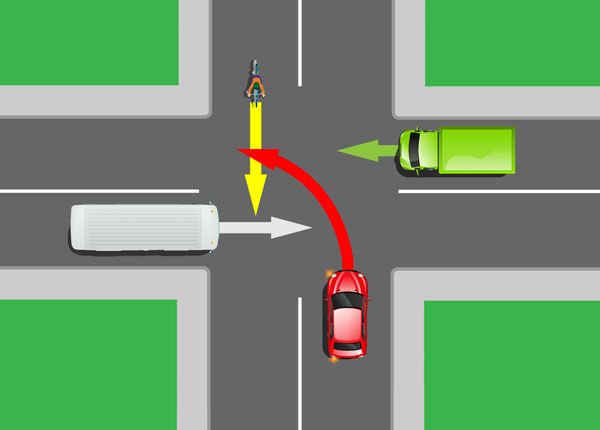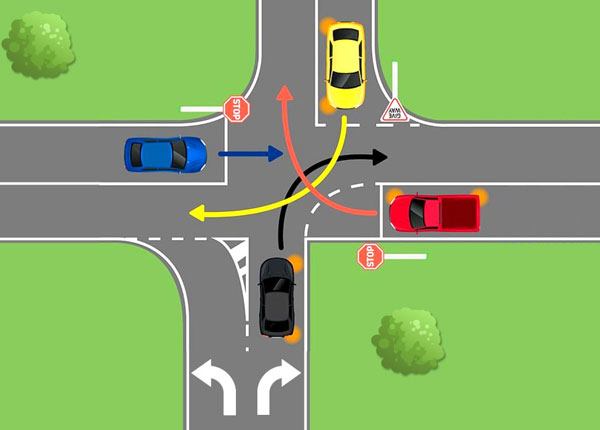
Communicating With Other Drivers to Keep Up The Traffic Flow
Updated Oct. 21, 2020All drivers must learn to communicate with other motorists effectively, in order to keep the flow of traffic moving in a smooth and orderly fashion. You cannot control another driver’s actions but if they communicate their intentions, you can adjust your driving behavior to avoid conflicts and disruptions. Always look out for other drivers signaling their intention to slow down, make a turn or change lanes. In turn, you must communicate your intentions to other road users.
Communication between drivers is essential. Despite the way many drivers behave, motorists are not capable of reading each other’s minds! If you make a maneuver which the drivers around you do not anticipate, without first communicating your intentions, you could cause a traffic jam, or worse – a collision.
One of the key lessons which all new drivers must learn about road safety, is never to become complacent. Do not assume that you know what other motorists will do, even if you are in a seemingly “predictable” situation. Remember that every driver is different, and nobody makes logical choices all the time.
Your communication tools
So, what tools are at your disposal when communicating with other drivers? All cars come equipped with in-built communication devices suitable for different situations.
- 1

The horn should be used to attract another motorist’s attention quickly in an emergency. For instance, to prevent them from colliding with your vehicle.
- 2

Signal lights are used to tell other motorists when you intend to alter course.
- 3

Brake lights warn motorists to the rear of your intention to slow down.
- 4

Hazard lights tell other road users that your car is disabled or experiencing difficulties.
When to use signal lights
You must activate your indicator lights to warn other drivers before you make a turn, change lanes, leave or enter a parking space. You can find further information on this in your state driving manual. The law in most states requires drivers to signal continuously for at least 100 feet prior to turning at an intersection, or into a driveway, alley or private road.
If you need to slow down or stop, activate your brake lights by lightly tapping the brake pedal before applying the brakes as usual. This warning allows motorists behind you to increase their following distance as necessary.
Hand signals for driving
If for any reason your turn signals or brake lights are not working, you must signal your intentions to other road users with hand signals instead. Even if you never have car trouble yourself, you may one day need to interpret hand signals when another motorist uses them. These signals are also widely used by cyclists.
Take your time
Be sure to allow the motorists around you enough time to register your communication before executing a maneuver. Having signaled your intention to change lanes, wait a few moments and then check to see if the drivers around you have acknowledged your intent. Signaling too late is almost as dangerous as not signaling at all. Plus, there is never any guarantee that other motorists are paying attention to the road and have seen your signal, even when it is activated in good time. The bottom line is: never complete your intended maneuver until you are certain it is safe.
Allow all pedestrians to clear the roadway before you start moving again. Look out for children and senior citizens who may take longer to cross.
 Allow all pedestrians to clear the roadway before you start moving again. Look out for children and senior citizens who may take longer to cross.
Allow all pedestrians to clear the roadway before you start moving again. Look out for children and senior citizens who may take longer to cross.



